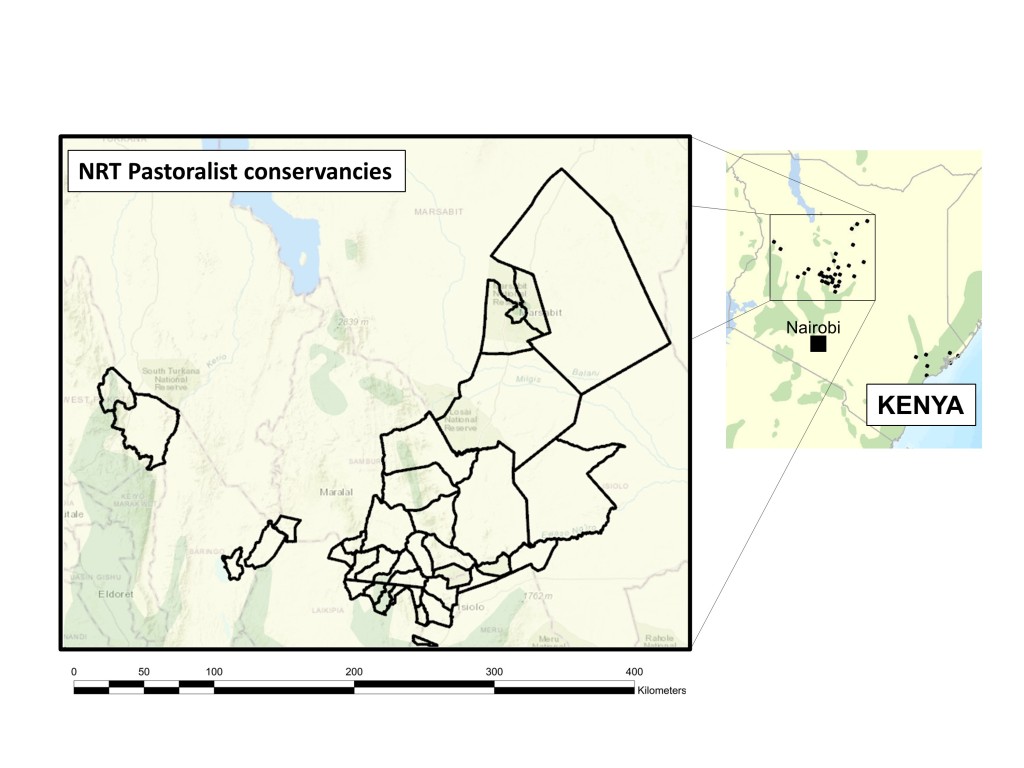
northern and coastal Kenya (as of the year 2020). Each conservancy is represented by a black dot in the
country map, and by a polygon indicating the extent of individual conservancies in the inset. The data used
for the longitudinal analysis of governance were drawn from the entire membership, whereas the data used
for the social satisfaction analyses were drawn from conservancies in the northern region of Kenya (inset).
Yellow background represents areas of savannah or other drylands (which is the environment predominantly
inhabited by extensive pastoralists), while green represents areas of woodland or farmland (i.e. where water
or rainfall is more abundant). Blue areas are large bodies of water.
By Lindsay A. Walker, Deepali Gohil, Joseph Hedges, Monique Borgerhoff Mulder, Juliet King, and Thomas E. Currie.
This Plain Language summary is published in advance of the paper discussed; check back soon for a link to the full paper.
Community-based Conservation (CBC) projects involve local communities directing and receiving benefits from conservation efforts. CBC projects need to receive the support of the communities involved in order to be successful. Governance systems of CBC projects are important for communicating with and coordinating community members. It is therefore important to evaluate both the characteristics of governance systems and the perceptions of governance systems by community members. It is also important to understand how factors other than the governance features of individual CBC organizations may affect feelings of satisfaction of community members.
Using existing data collected by a local NGO in northern Kenya from 2014-2017, we investigated whether characteristics indicative of good governance have increased over time in 28 CBC organisations (“conservancies”). We also assessed whether the presence of good governance characteristics, and other factors (whether community members feel safe, conservancy population size, and age of conservancy) are related to the degree to which community members reported feeling satisfied with their conservancy.
We found:
a. Characteristics of good governance significantly increased in conservancies over the study period.
b. Self-reported feelings of safety and our measures of good governance most strongly predicted community members’ satisfaction with their conservancy.
c. Livestock raiding and land/boundary conflicts appear to be the security issues most closely associated with community members reporting that they feel unsafe.
Our adapted measure of governance and analyses provide a more robust assessment of the idea that governance characteristics of conservancies improved in meaningful ways during the study period. However, these analyses also point to the ways in which the monitoring of governance of CBC projects could be improved. This can be done by further incorporating or strengthening assessments of concepts that are known to be of importance in governing the use of natural resources.
Our analyses of community members’ satisfaction with their conservancies point to the need for CBC projects to consider interactions with other groups in the wider landscape, and to engage with issues of governance at different levels of organization.